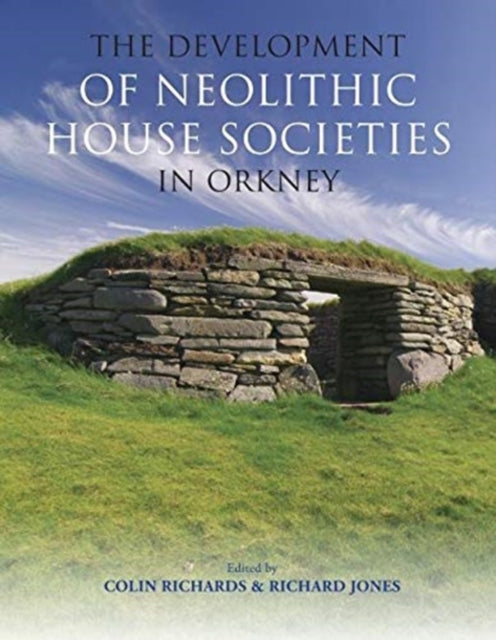Shulph Ink
Development of Neolithic House Societies in Orkney
Development of Neolithic House Societies in Orkney
YOU SAVE £3.28
- Condition: Brand new
- UK Delivery times: Usually arrives within 2 - 3 working days
- UK Shipping: Fee starts at £2.39. Subject to product weight & dimension
Bulk ordering. Want 15 or more copies? Get a personalised quote and bigger discounts. Learn more about bulk orders.
Couldn't load pickup availability
- More about Development of Neolithic House Societies in Orkney
The Orkney islands have a rich Neolithic archaeology, with a noticeable imbalance between 4th and 3rd millennium cal BC evidence. Claude Lévi-Strauss' concept of "house-societies" provides a classification for social groups that don't conform to established anthropological kinship structures. The Bay of Firth, Mainland Orkney, explores the idea that the physical appearance of the house is a potent resource for materializing the dichotomous alliance and descent principles apparent in the archaeological evidence. The Cuween-Wideford Landscape Project provided an unprecedented depth and variety of evidence for Neolithic occupation, exploring the transition from wood to stone and relationships between the living and the dead.
Format: Paperback / softback
Length: 512 pages
Publication date: 15 April 2021
Publisher: Windgather Press
Orkney, a collection of relatively small islands situated off the northeast coast of the Scottish mainland, boasts an extraordinary wealth of Neolithic archaeology. A diverse array of houses, chambered cairns, stone circles, standing stones, and passage graves offers an exceptionally comprehensive range of archaeological and architectural contexts. However, in the early 1990s, there was a noticeable imbalance between 4th and 3rd millennium cal BC evidence, with house structures and 'villages being well represented in the latter but minimally in the former. As in other parts of the British Isles, the archaeological visibility of the 4th millennium cal BC in Orkney tends to be dominated by the monumental presence of chambered cairns or tombs.
In the 1970s, Claude Lévi-Strauss proposed a form of social organization based on the "house-sociétés à maisons" concept to classify social groups that deviated from established anthropological kinship structures. This approach centers around the "house," conceived as a conceptual resource that arises from a strategy of constructing and legitimizing identities amidst ever-changing social conditions. Drawing on the findings of extensive fieldwork in the Bay of Firth, Mainland Orkney, the text explores the idea that the physical appearance of the house holds immense potential for materializing the dichotomous alliance and descent principles evident in the archaeological evidence for the early and later Neolithic of Orkney. It argues that certain insights made by Lévi-Strauss in his basic formulation of sociétés à maisons are highly relevant to interpreting the archaeological evidence and establishing the framework for a "social narrative of the material change."
Weight: 2034g
Dimension: 219 x 330 x 33 (mm)
ISBN-13: 9781911188872
This item can be found in:
UK and International shipping information
UK and International shipping information
UK Delivery and returns information:
- Delivery within 2 - 3 days when ordering in the UK.
- Shipping fee for UK customers from £2.39. Fully tracked shipping service available.
- Returns policy: Return within 30 days of receipt for full refund.
International deliveries:
Shulph Ink now ships to Australia, Belgium, Canada, France, Germany, Ireland, Italy, India, Luxembourg Saudi Arabia, Singapore, Spain, Netherlands, New Zealand, United Arab Emirates, United States of America.
- Delivery times: within 5 - 10 days for international orders.
- Shipping fee: charges vary for overseas orders. Only tracked services are available for most international orders. Some countries have untracked shipping options.
- Customs charges: If ordering to addresses outside the United Kingdom, you may or may not incur additional customs and duties fees during local delivery.


